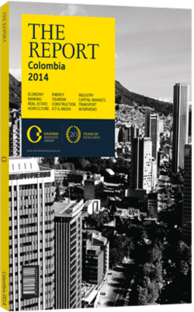OBG talks to Ken Kluksdahl, President, AngloGold Ashanti Colombia

Interview: Ken Kluksdahl
To what extent will the drop in gold prices affect production and exports?
KEN KLUKSDAHL: Following the US Federal Reserve’s decision to taper its quantitative easing programme, the industry has seen a retrenchment of nearly 30% of its revenues. While there are still large gold buyers, such as China and India, the fall in gold price has undoubtedly hurt the industry. Consequently, mining companies are enacting strategies to reduce costs, and this could potentially harm long-term aspects of the business and prevent new mines from being developed.
Colombia is an important country for gold exploration. AngloGold Ashanti maintains three advanced projects in the country and relies on the high value of these assets for its future growth. At present, however, Colombia’s gold mining industry is in an explore-and-discover phase and is dominated by junior companies. The reduced gold price has impacted this sector substantially, with most companies struggling to survive and thus limiting their exploration activities. This keeps them from making important discoveries and halts new projects for larger producing companies. Therefore, we should not expect significant growth in gold mining investment in Colombia until prices improve.
The National Mining Agency’s inspection process is often under fire. What are the key complaints?
KLUKSDAHL: The government’s problem when managing permits and monitoring compliance through inspections is more of timeliness than lack of rules. In my view, the rules themselves are relatively clear but break down with implementation. A more fluid dialogue between miners and regulators should be encouraged, as companies often do not understand what is required of them and this hinders the processes.
In this business, it is essential to be time-effective and this often does not happen in Colombia. At our La Colosa project, for example, nearly 15 years will have passed from initial discovery to full-capacity production; at our smaller Gramalote project the span will be close to 10 years. If these periods were reduced by about 30%, Colombia could much improve its attractiveness as a mining destination.
In what way does an increase in illegal gold production affect foreign investment?
KLUKSDAHL: Illegal mining has several harmful effects on the industry and economic development. Its main impact on foreign investment lies in the inability of serious investors to enter areas with high mineral potential, as illegal miners occupy them. State-wide, illegal miners do not pay taxes or respect the environment, preventing sustainable development in the regions where they operate. To reduce illegal mining, the state is working actively with the private sector and has set many standards to help diminish these practices. The challenge now is effective implementation.
What is your assessment of the environmental licensing system currently in place?
KLUKSDAHL: The environmental licensing system is always challenging. Investors must be certain their investments will not be constantly delayed. The issue is similar to that of mining titles: the rules are fairly clear, but lack effective implementation. Having both national and local authorities involved in this and other fields leads to interference, uncertainty and loss of time.
How can the legal gold mining sector contribute to developing a pool of qualified labour?
KLUKSDAHL: Colombia has very talented technical profiles, although many people leave to work in other countries, something we hope will gradually change. Mining companies should help by hiring local talent as much as possible. We have been able to find talented mining engineers and geologists locally, and new professionals can always be trained to operate and maintain complex machinery. The country also has the National Learning Service, a model that has been very useful in helping the industry to find skilled people.
You have reached the limit of premium articles you can view for free.
Choose from the options below to purchase print or digital editions of our Reports. You can also purchase a website subscription giving you unlimited access to all of our Reports online for 12 months.
If you have already purchased this Report or have a website subscription, please login to continue.

